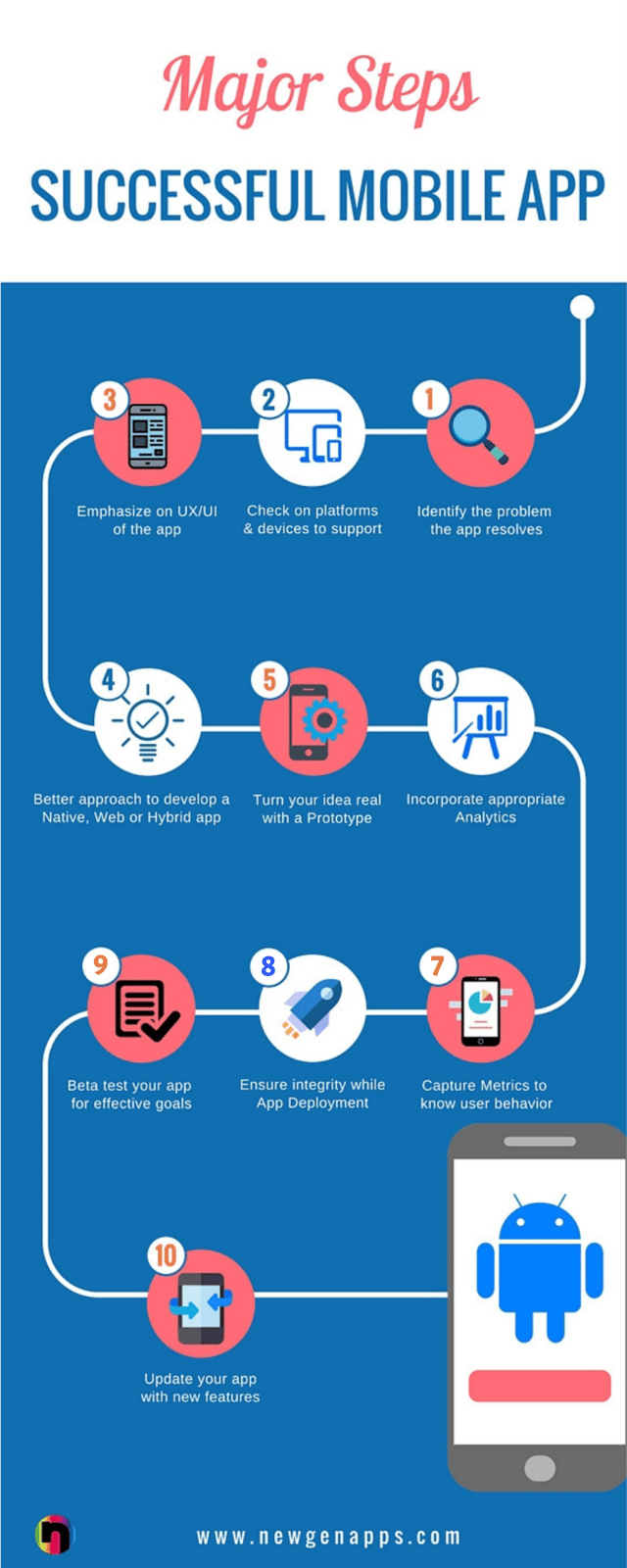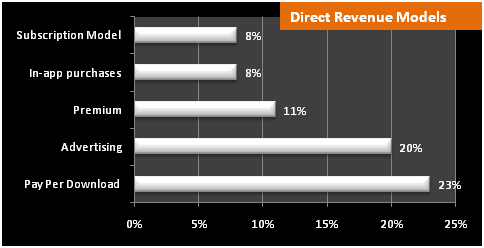10 Steps: How to Market Your Mobile Apps
So you have developed an amazing application (need help? Check out this blog) and now are ready to release it. After developing an app, marketing is...
6 min read
Lata Rastogi : May 16, 2017 12:00:00 AM

In today’s fast paced world, the mobile app market is expanding by leaps and bounds. Consequently, mobile marketing is becoming more competitive. To ensure the visibility of your app in such a complex scenario, you need to be very particular about the approach being followed for mobile app development. To create a successful mobile app you need to follow a systematic approach to app development. We have summarized 10 steps to create a successful mobile application to help you out in this process.
We have tailored solutions briefs for every industry that summarize the current trends and innovations to come. Get your report now!

Get Your Mobile App Developed by Us:

To create a successful mobile application, the first thing you need to keep in mind is:
Identify a problem which can be resolved by your app
Decide the features of your app
The app should provide customer with tangible benefits including reducing costs via productivity enhancements, new revenue or improving the customer experience.

To create a successful mobile app, you need to identify or be clear about:
 The graph depicts a detailed account of app revenue models
The graph depicts a detailed account of app revenue models
At this point you should also think about your finances, how much money you wish to set aside for the development, marketing and eventual release of your app. Here's a quick guide to the approximate costs for developing an app.

Designing your app is yet another significant factor responsible for success of an app in the market. An app developer should concentrate on the UI design, multi-touch gestures for touch-enabled devices and consider platform design standards as well. Today, emphasis is on the UI design of an app as it plays a crucial role in the success of an app. Designing an app is becoming increasingly popular as it create an instant impact on the mind of the user while ensuring usability of an app.
Some websites exclusively for designing app:
If you need to look at common mobile design patterns, you can look into:
http://www.android-app-patterns.com/
For wireframing, you can use sites like
Selecting the right approach for developing an app is highly important. Ideally, app development approach must be in accordance with the time and budget constraints of a client.
Next stage, after identifying the approach is developing a prototype. It is actually the process of taking your idea and turning it into an application with some basic functionality. A prototype makes it quite easier to sell your idea to potential buyers who can now actually view the tangible benefits instead of just visualizing or reading product description. It is quite helpful in attracting investors and working with manufacturers and finding licensees.
Even while working on a prototype, do ensure you take measures to secure your app against unauthorized usage and access to data.
Without a plan to market your application it is very difficut establish it in the market. Download our free eBook that will help you create a mobile app marketing plan.

There is also a need to incorporate appropriate analytics which gives you a detailed picture of how many visitors use your webs, how they arrived on your site and how can they keep coming back.
Some of the mobile analytics tool which helps in this process:
With data sciences, including predictive analytics coming up in mobile apps, it can make your apps highly marketable.
Beta testing is the first opportunity to get feedback from your target customers. It is especially important as it enhances your visibility in the app store. It not only reduce product risk but get you that initial push in the app store. To identify beta testers is another important task to ensure success of an app.
Preparing for beta launch:Deploying an app requires plan, schedule and control of the movement of releases to test and live environments. The major objective of Deployment Management is to ensure the integrity of the live environment is protected and that the correct components are released.
Must Read: 10 Biggest Risks to Mobile Apps Security
There has been significant rise in the mobile app users in the present decade. As a result, the need to collect accurate metrics is highly important. As the number of consumers using mobile applications steadily rises, the need to collect accurate metrics from them is increasingly important. Unfortunately, many of the methods used to measure apps are taken from web analytics.
Major input metrics which should be kept in mind:

After capturing the metrics it becomes important to upgrade your app with improvements and innovative features. A mobile app without innovative features loses its usability in long run. Upgrading your app with innovative features enhances its visibility along with downloads of an app. Also ensure you keep updating your app to meet new guidelines offered by the various platforms, don't let your apps stagnate.
These are some of the of steps which should be taken into account while developing an app. Using these steps, you can develop an app ensuring success in long run. However, it is nearly impossible to pen down the exact steps which are responsible for success of an app.
Want help in creating a mobile app for your business? Contact us.
While this doesn't fall under the steps to "make" an app, it is definitely important to make your app successful. If you do not market your app well once it is released, there is a high possibility of it being lost in the multitude of apps available on the various stores. So make sure your market your app well. This a bonus step to create a successful mobile application but it is highly recommended that you use it for your own benefit.
Start now and leverage mobile to promote your business!

So you have developed an amazing application (need help? Check out this blog) and now are ready to release it. After developing an app, marketing is...

A mobile strategy is a way to incorporate mobile devices into your overall corporate strategy. According to CMS report, average smartphone conversion...